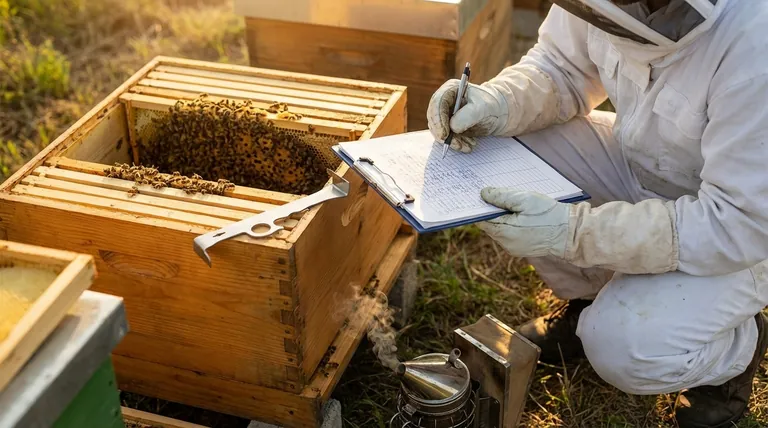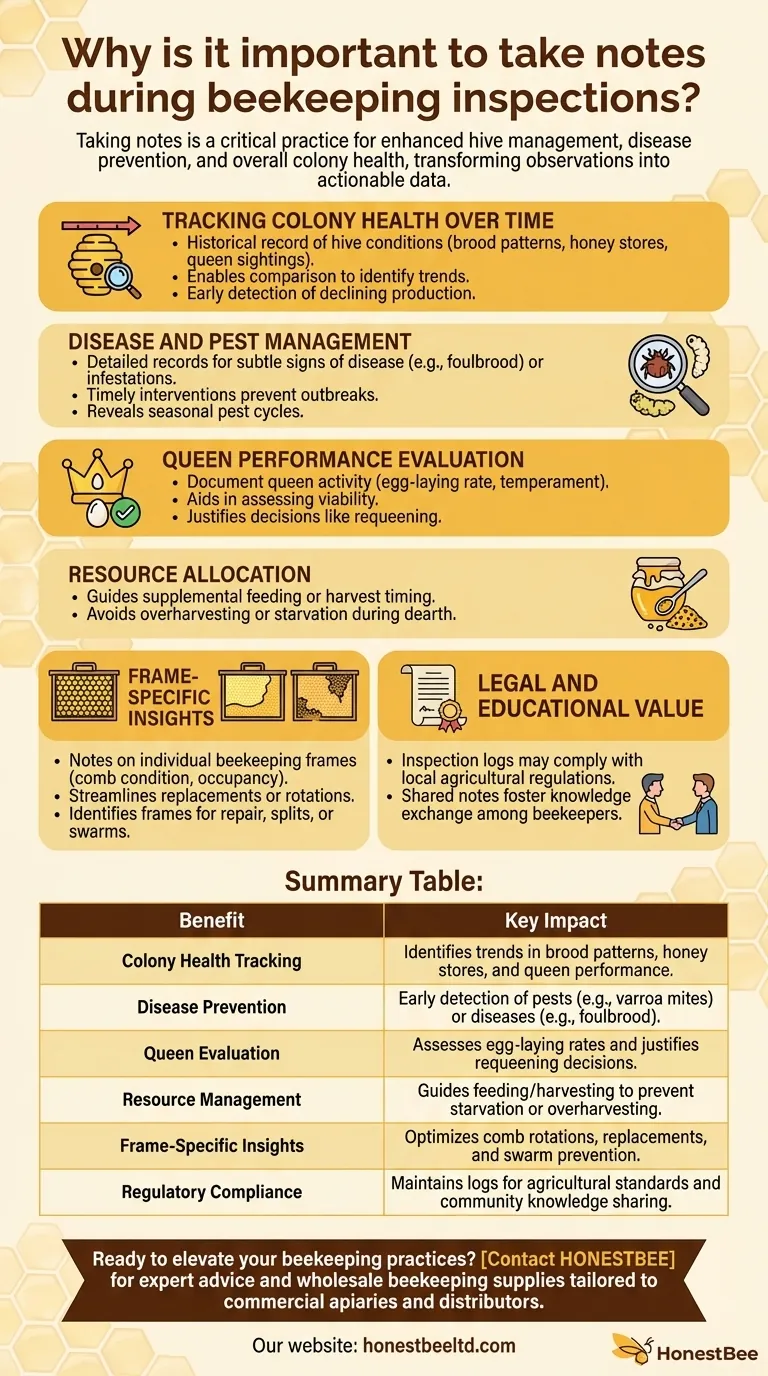Taking notes during beekeeping inspections is a critical practice that enhances hive management, disease prevention, and overall colony health. By documenting observations systematically, beekeepers can track patterns, make informed decisions, and optimize interventions. This process is especially valuable when monitoring specific components like beekeeping frames, as it allows for targeted care and long-term productivity analysis.

Key Points Explained:
-
Tracking Colony Health Over Time
- Notes provide a historical record of hive conditions, such as brood patterns, honey stores, and queen sightings.
- Enables comparison across inspections to identify trends (e.g., declining brood production or honey accumulation).
- Example: Spotting irregular brood patterns early can prompt checks for pests like varroa mites.
-
Disease and Pest Management
- Detailed records help detect subtle signs of disease (e.g., foulbrood) or infestations (e.g., hive beetles).
- Timely interventions can prevent outbreaks from spreading to other colonies.
- Have you considered how notes might reveal seasonal pest cycles unique to your apiary?
-
Queen Performance Evaluation
- Documenting queen activity (egg-laying rate, temperament) aids in assessing her viability.
- Notes justify decisions like requeening if productivity declines.
-
Resource Allocation
- Records of honey/pollen stores guide supplemental feeding or harvest timing.
- Avoids overharvesting or starvation during dearth periods.
-
Frame-Specific Insights
- Notes on individual beekeeping frames (e.g., comb condition, occupancy) streamline replacements or rotations.
- Identifies frames needing repair or those ideal for splits/swarms.
-
Legal and Educational Value
- Inspections logs may comply with local agricultural regulations.
- Shared notes foster knowledge exchange among beekeeping communities.
By transforming raw observations into actionable data, note-taking bridges the gap between routine checks and sustainable beekeeping—a testament to how simple tools shape thriving ecosystems.
Summary Table:
| Benefit | Key Impact |
|---|---|
| Colony Health Tracking | Identifies trends in brood patterns, honey stores, and queen performance. |
| Disease Prevention | Early detection of pests (e.g., varroa mites) or diseases (e.g., foulbrood). |
| Queen Evaluation | Assesses egg-laying rates and justifies requeening decisions. |
| Resource Management | Guides feeding/harvesting to prevent starvation or overharvesting. |
| Frame-Specific Insights | Optimizes comb rotations, replacements, and swarm prevention. |
| Regulatory Compliance | Maintains logs for agricultural standards and community knowledge sharing. |
Ready to elevate your beekeeping practices? Contact HONESTBEE for expert advice and wholesale beekeeping supplies tailored to commercial apiaries and distributors.
Visual Guide

Related Products
- HONESTBEE Advanced Ergonomic Stainless Steel Hive Tool for Beekeeping
- Professional Dual-End Stainless Steel Hive Tool for Beekeeping
- Professional 3-Bar Frame Grip with Integrated Hive Tool
- Professional Engraved Round Hive Number Tags for Beekeeping
- Beehive Handle and Frame Rest Cutting Machine: Your Specialized Hive Machine
People Also Ask
- Why is it important to compare the progress of different hives? A Beekeeper's Key Diagnostic Tool
- Why do hive tools have a hole? Unlock the Secret to Efficient Beekeeping
- What tools are used for cleaning frames? A Beekeeper's Simple 4-Tool Guide
- What is the hole in a hive tool for? A Multi-Tool for Apiary Repairs and Maintenance
- What are some common uses of a hive tool? Essential Multi-Purpose Tool for Every Beekeeper



















